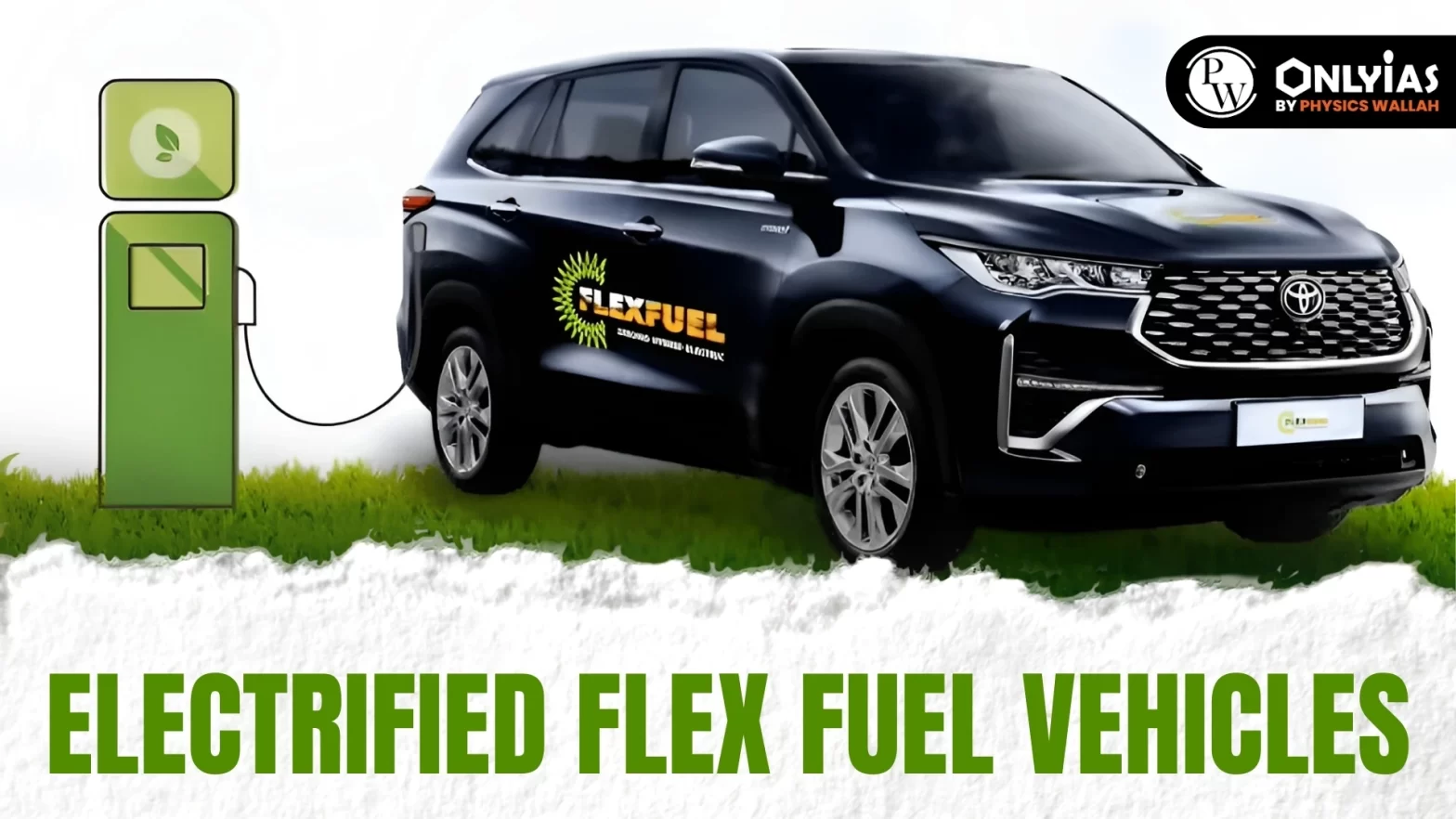The electrified Flex Fuel Vehicles integrates both a Flex Fuel engine and an electric powertrain, offering the dual benefit of higher ethanol use and improved fuel efficiency.

Context: Recently, the Union Minister for Petroleum and Natural Gas unveiled the prototype of the World’s 1st BS-6 Stage-II Electrified Flex fuel vehicles.
Ethanol can be produced domestically at a lower cost than importing crude oil. This saves foreign exchange. It is considered a clean fuel as it has very negligible carbon emissions. There is a reduced emission of carbon monoxide, hydrocarbons, and nitrogen oxides.
Electrified Flex Fuel technology needs further refinement to make it suitable for mass adoption. In the absence of such policies, the potential advantages cannot be reaped.
| Must Read | |
| NCERT Notes For UPSC | UPSC Daily Current Affairs |
| UPSC Blogs | UPSC Daily Editorials |
| Daily Current Affairs Quiz | Daily Main Answer Writing |
| UPSC Mains Previous Year Papers | UPSC Test Series 2024 |
<div class="new-fform">
</div>
